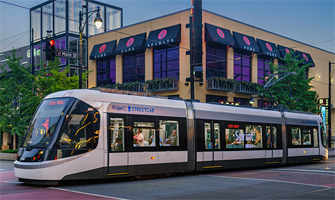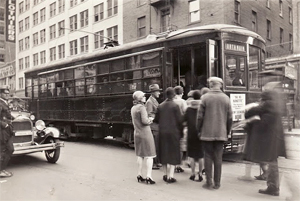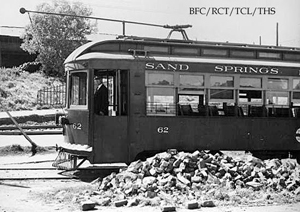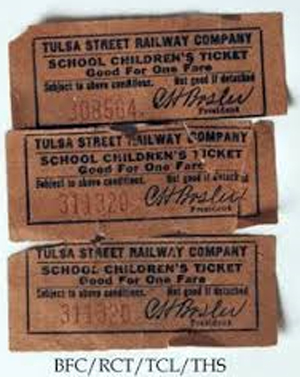
Kansas City Streetcar
Analysis: As Tulsans consider spending hundreds of millions of dollars for a streetcar system, proponents point to Kansas City as an example of a successful system. But the claims about Kansas City’s success are grossly overstated and voters reject the system almost every time they are given a chance. I hope Tulsa can learn from our misadventure.
First, it is noteworthy itself that in the age of driverless cars, some want to look backward to the inflexible fixed-rail technology of the 19th century. In Kansas City, when we get icy weather, the streetcar system is shut down and replaced with buses. And when even a single streetcar is involved in an accident or breaks down, the whole system is shut down. Streetcars cannot reroute themselves; they cannot drive around an accident. As neighborhoods grow over time, fixed rail routes cannot shift as demand shifts. Streetcars are literally and figuratively stuck in a rut. And on top of this, streetcars cause traffic congestion because they are so large and slow moving.
 Streetcars also fail to remove cars from the road. Research shows that streetcars really just move people away from buses, not out of their cars.
Streetcars also fail to remove cars from the road. Research shows that streetcars really just move people away from buses, not out of their cars.
Because streetcars are such an awful and expensive transit option, proponents instead point to the economic development that they purportedly create.
 Every new development is met with satisfied nods as evidence of the streetcar’s success. The research around the country and our experience in Kansas City tells another story. It’s not the streetcar that drives development, but all the taxpayer money handed out to encourage construction along the route. Abatements, cash handouts, tax credits and tax-increment finance subsidies litter the streetcar route here.
Every new development is met with satisfied nods as evidence of the streetcar’s success. The research around the country and our experience in Kansas City tells another story. It’s not the streetcar that drives development, but all the taxpayer money handed out to encourage construction along the route. Abatements, cash handouts, tax credits and tax-increment finance subsidies litter the streetcar route here.
On top of the subsidies, there’s the price tag on the streetcar itself. The cost of a streetcar is many times the cost of simply adding a new bus route. The bitter irony is that Kansas City raised taxes to fund a large portion of the approximately $110 million cost for 2.2 miles of track, then lowered taxes for developers to entice them to invest along the route. Imagine what would have happened if the city had skipped the streetcar and instead lowered taxes for everyone!
Tulsans should be aware that Kansas City voters have been rejecting streetcars for decades. Due to an odd artifact of Missouri law, small groups of citizens can create transportation development districts where sales taxes can be levied on anyone who shops within the district’s borders. As a result, fewer than 400 votes cast in the district committed all of Kansas City to supporting a $110 million project.
 Before the Obama Administration, few if any federal funds were available for streetcars because they were such a bad investment. Since then, however, the spigots have been flowing, and the result has been a boom in streetcar spending nationwide. In several cases the percentage of people who use transit in those very cities has actually dropped. The current administration has been wisely hesitant to fund new streetcar projects.
Before the Obama Administration, few if any federal funds were available for streetcars because they were such a bad investment. Since then, however, the spigots have been flowing, and the result has been a boom in streetcar spending nationwide. In several cases the percentage of people who use transit in those very cities has actually dropped. The current administration has been wisely hesitant to fund new streetcar projects.
Streetcars do look fun, however. One pundit in Kansas City refers to ours as a party bus. It’s free to ride, looks sleek, and is something new on the street. But it doesn’t help the city grow or efficiently move people where they want to go. It requires a lot of money to build and operate and requires even more subsidies along the route to create the illusion of economic growth. In Kansas City and perhaps Tulsa, the few-if-any benefits to a streetcar are not worth the significant costs. Taxpayers should be wary.
About the author: Patrick Tuohey is Director of Municipal Policy at the Show-Me Institute which may be reached online at the following links:

good post